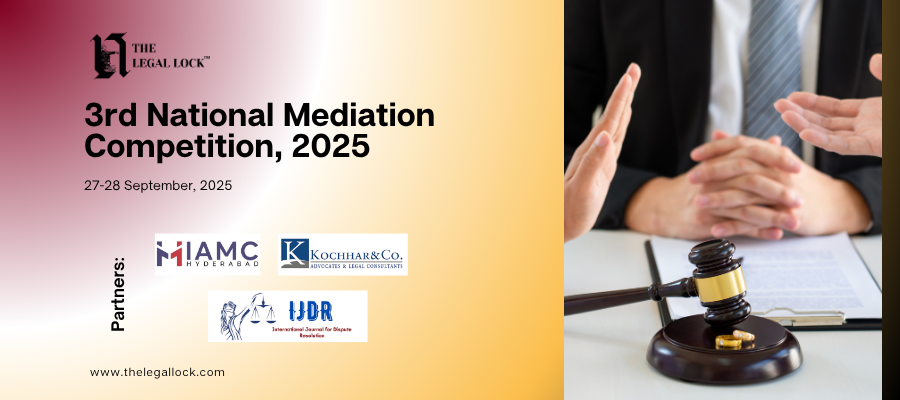PART III- FUNDAMENTAL RIGHTS UNDER THE INDIAN CONSTITUTION
INTRODUCTION
Many constitutions do not have a written list of Fundamental Rights for example, the Australian Constitution, the Canadian Constitution did not have a written list of Fundamental Rights till 1982. The England Constitution does not have a written list of Fundamental Rights. Yet these constitutions have acknowledged the Fundamental Rights time and again.
Dicey’s argued for the quarantee of Fundamental Rights in England in the following words: “Constitution is the consequence of rights and not vice-versa. The constitution in England has developed by the determination of powers of the Government the Courts have created rights in the citizens. The Courts can tell the Government that its act (s) is illegal, and the Government, run by the rule of law, cannot act, illegally”. Though the idea of rule of law (and as a corollary, the Human Rights) was there since the times of Aristotle, it has developed gradually in recent times.
Before 1701, in England the Judges held office during the pleasure of the crown. But as a significant change, since 1701, the Judges hold office during their good behaviour. This has made the judiciary more or less independent. But at the same time England did not give enough rights to its colonies. As a result the Americans revolted, demanding a Bill of Rights against the Federal Government- they finally became independent.
HISTORICAL EVOLUTION OF FUNDAMENTAL RIGHTS IN INDIA
The Government of India Act, 1935, contained no affirmation of Fundamental rights. Both the Simon Commission and the Joint Parliamentary Committee were opposed to the inclusion of a declaration to that effect in a constitutional document. They held that the declaration of rights would create a grave risk of a large number of laws being declared in valid and would impose an embarrassing restriction on the powers of the Legislature. The other view is that a declaration of Fundamental Rights in the constitutional document is necessary for the welfare of the people
Rights are the groundwork of the state. They are the quality which gives the exercise of its power a moral character. And they are natural rights in the sense that they are essential for the good life. Where a right is guaranteed by the constitution it commands the respect of the people and the Government alike.
The framers of the Indian Constitution took inspiration from the Megna Carta of England, the Declaration of Rights of Man and Citizens from France and the U.S. Bill of Rights. The inclusion of a Chapter on Fundamental Rights.in the constitution is in accordance with the trend of modem democratic thought. The idea being to preserve that which is an indispensable condition of a free society in West Virginia State Board of Education v. Barnet, Jackson J., explaining the nature and the purpose of the Bill of Rights observed: “The very purpose of a Bill of Rights was to withdraw certain subjects from the vicissitude of political controversy, to place them beyond the reach of majorities and officials and to establish them as legal principles to be applied by the Courts. One’s rights to life, liberty and property, to free speech, to free press, freedom of worship and assembly and other Fundamental Rights may not be submitted to vote, they depend on the outcome of no election.”
RELATIONSHIP BETWEEN FUNDAMENTAL RIGHTS AND THE STATE
The notion of rights grew with the growth of the concept of state. As the institution of state grew and became distinct from the general public, different combinations of powers, in the form of state, started dominating the others. These combinations could be different in different societies or Countries, viz., religious combinations; feudal combinations, racial combinations etc. These combinations started accumulating power in their own hands at the expense of those who were ruled, in order to gain more and more benefits for their own class. And with this grew the idea of some kind of rights to the people other than the ‘state’, in order to protect their interests. The attempts were initially at protecting the individual against the state i.e. the guaranteed Fundamental Rights were used against the state.
Had the society been homogeneous there would have been no need for Fundamental Rights, for example, if the division has been only on political lines, there would have been no need for
Fundamental Rights. But the divisions in the society as such are heterogeneous. Divisions are on political lines, sex lines, caste lines, place of birth lines, linguistic lines etc. and hence the need for Fundamental Rights.
The idea of Fundamental Rights is not actually that of curtailing something from the State, but to ensure a better life to the people who ultimately constitute the state itself. This was realized particularly after World War II and as a step towards this realization came the U. N. D. H. R., 1948. A point to be noted in this respect is that the constitutions are not perfect in the respect; rather they are moving in that direction and the interpretations of the constitution have to be made in that light. For example, in the case of Secretary Ministry of Information and Broadcasting v. Cricket Control Board of India in which the Supreme Court had declared that the airwaves should be controlled by an autonomous public authority. This Case involved an interpretation of the Fundamental Rights expression. The actual question involved was not that of autonomy but the values involved.
THE CONCEPTUAL ANALYSIS OF FUNDAMENTAL RIGHTS
The purpose of Fundamental Rights is to ensure the maximum reduction of group domination in certain areas. The idea being that one group dominates and the Fundamental Rights say that they should not and then it is not to be seen in the narrow perspective of state versus citizens, rather it has to be seen in the wider perspective of dominated versus dominating or oppressed versus oppressors, etc.
Moreover, that dominating person is not a private individual; rather he is an identifiable class. And if it is so, we can say that dominating class is ‘state’ for the purpose of enforcing fundamental rights. It is actually a question of power versus lack of power and this ‘power’ has been defined as the State in Article 12.
The Fundamental Rights are primarily meant for the protection of the individual against the State. But this should not be seen as an individual versus state conflict. The state itself is the means for
the realization of the rights of the individual. The state can guarantee the rights of the individual vis-à-vis the other individuals.
This concept also finds its origins in the social contract theory as propounded by Locke, Rosseau and Hobbes. Hobbes said: “People have, in a kind of social contract with the state, parted away with their Rights and have vested them in the state. The state, in turn, undertakes to protect these rights”. Locke and Rosseau went a step further and qualified this theory of Hobbes by adding that the people have retained some of their rights the rights which are inalienable unto themselves despite the social contract: these rights are what later on came to be called the Fundamental Rights.
NEW JUDICIAL TREND IN FUNDAMENTAL RIGHTS
In A. K. Gopalan v. State of Madras, the Court had taken a very restrictive approach, ruling that the various Fundamental Rights included in the Constitution are mutually exclusive i.e., if an enactment or, executive action taken, is made under a particular article, its validity has to be judged in light of the provisions of that particular article alone and not with respect to other articles. Also, earlier it was thought that only the Fundamental Rights enlisted in the Constitution are the inputs available to the people. But the trends have changed since then and particularly after the the cases of Maneka Gandhi v. Union of India, Sunil Batra v. Delhi Administration and Hussainara Khatoon v. State of Biar.
In Maneka Gandhi v. Union of India, Bhagwati J., held: “the correct way of interpreting the provision of Part III is that attempt of the Court should be to expand the reach and ambit of Fundamental Rights rather than attenuate their meaning and content”.
It has also been held in Maneka Gandhi v. Union of India that the various articles are not mutually exclusive but form a single integrated scheme in the constitution. Bhagwati J., said: “Their water must mix to constitute that grand flow of unimpeded and impartial justice. Isolation of the various aspects of human freedom for purposes of their protection, is neither realistic nor beneficial but would defeat the objects of such protection”.
Accordingly, a law depriving a person of his personal liberty under Article 21 must also satisfy the test of reasonableness under Articles 14 and 19 of the constitution.
Further, it was held that to be a Fundamental Right, it is not necessary that a right must be specifically mentioned in a particular Article. It may be a Fundamental Rights if it is an integral part of a named Fundamental Rights or partaker of the same basic nature and character as that Fundamental Right. Every activity that facilitates the exercise of the named Fundamental Right may be considered an integral part of that right and hence be a Fundamental Right.
CONCLUSION
Certain rights are regarded as fundamental because they are most essential for the attainment by its individual of his full intellectual, moral and spiritual status. The declaration of Fundamental Rights in the Constitution serve as reminder to the Government in power that certain liberties, assured to the people by the Constitution are to be respected. The danger of encroachment on liberties is particularly great in Parliamentary democracy where those who form the Government are the leaders of the majority party in the Parliament or Legislature and can get laws made according to their own wishes.
Fundamental Rights ensure that there is a government of law and not of man in the country. The object is to establish a rule of law and the Indian Constitution goes much beyond – the object is not only to provide security and equality of citizenship of the people and thereby helping a nation building but also to provide certain standards of conduct citizenship justice and fair play.
Bhagwati, J. in Maneka Gandhi v. Union of India said: “These fundamental rights represent the basic values cherished by the people of India since the Vedic times and they are calculated to protect the dignity of the individual and create conditions in which every human being can develop his personality to the fullest extent. They weave a pattern of guarantee on the basic structure of human rights, and impose negative obligations on the state not to encroach on the individual liberty in its various dimensions”.



